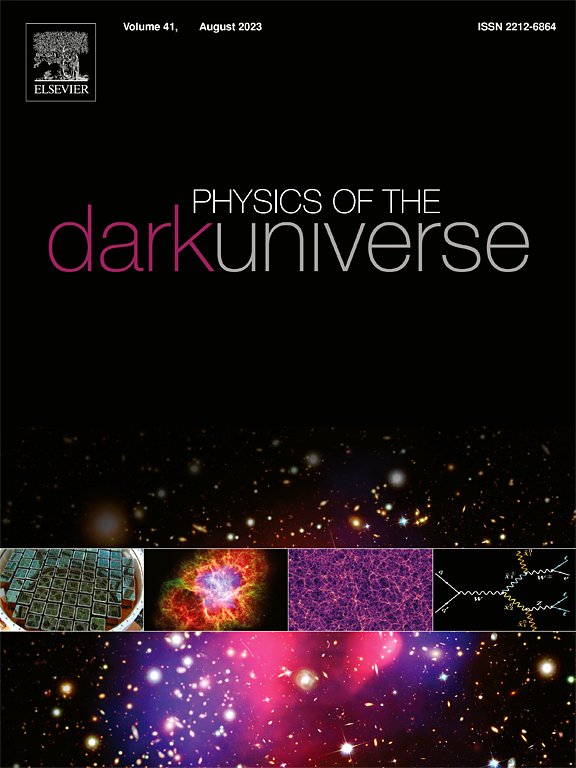Traversable wormholes in non-minimal Einstein–Yang–Mills gravity: Geometry, energy conditions, and gravitational lensing
IF 6.4
2区 物理与天体物理
Q1 ASTRONOMY & ASTROPHYSICS
引用次数: 0
Abstract
This work presents a new class of static, spherically symmetric traversable wormhole solutions within the framework of non-minimal Einstein–Yang–Mills (EYM) gravity, where the SU(2) Yang–Mills field is purely magnetic. By adopting a constant redshift function and introducing a direct coupling between the Ricci scalar and the Yang–Mills field strength, we investigate the role of the non-minimal coupling constant and the magnetic charge in shaping the wormhole geometry. Our analysis shows that for small values of , the flare-out and throat conditions can be satisfied, allowing physically viable traversable wormholes without requiring externally introduced exotic matter. The Arnowitt–Deser–Misner (ADM) mass is evaluated, revealing that for it grows monotonically with charge, whereas for it decreases with increasing charge, signaling a reduction in the total mass-energy of the system. An examination of the energy conditions indicates localized violations of the null and weak energy conditions at the throat, while the strong energy condition remains satisfied. Finally, the study of gravitational lensing confirms that the deflection angle of light is consistently positive, reflecting the overall attractive nature of the wormhole’s gravitational field. These results highlight the significant role of non-minimal gauge–gravity couplings in enabling traversable wormholes with distinct observational signatures.
非极小爱因斯坦-杨-米尔斯引力中的可穿越虫洞:几何、能量条件和引力透镜
在非极小爱因斯坦-杨-米尔斯(EYM)引力的框架内提出了一类新的静态、球对称可穿越虫洞解,其中SU(2)杨-米尔斯场是纯磁性的。采用恒定红移函数,引入Ricci标量与Yang-Mills场强之间的直接耦合,研究了非极小耦合常数ξ和磁荷Q在虫洞几何形状中的作用。我们的分析表明,对于较小的ξ值,可以满足爆发和喉咙条件,允许物理上可行的可穿越虫洞,而不需要外部引入外来物质。对Arnowitt-Deser-Misner (ADM)质量进行了计算,结果表明,当ξ<;0.01时,ADM质量随电荷的增加而单调增长,而当ξ≧0.01时,ADM质量随电荷的增加而减小,表明系统的总质能降低。对能量条件的检查表明,在喉部局部违反了零能和弱能条件,而强能条件仍然满足。最后,引力透镜的研究证实,光的偏转角度始终是正的,反映了虫洞引力场的整体吸引力。这些结果强调了非最小尺度-重力耦合在实现具有不同观测特征的可穿越虫洞方面的重要作用。
本文章由计算机程序翻译,如有差异,请以英文原文为准。
求助全文
约1分钟内获得全文
求助全文
来源期刊

Physics of the Dark Universe
ASTRONOMY & ASTROPHYSICS-
CiteScore
9.60
自引率
7.30%
发文量
118
审稿时长
61 days
期刊介绍:
Physics of the Dark Universe is an innovative online-only journal that offers rapid publication of peer-reviewed, original research articles considered of high scientific impact.
The journal is focused on the understanding of Dark Matter, Dark Energy, Early Universe, gravitational waves and neutrinos, covering all theoretical, experimental and phenomenological aspects.
 求助内容:
求助内容: 应助结果提醒方式:
应助结果提醒方式:


